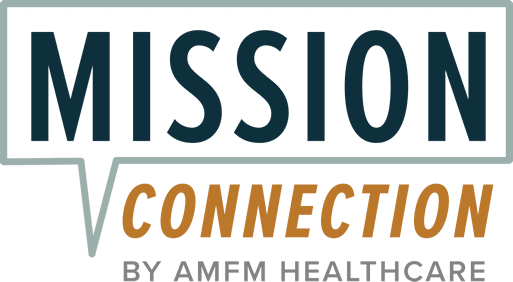Physical & Stress-Related Symptoms in Adults: Causes and Relief

Stress is a feeling we’re all familiar with. Life isn’t all roses, and when the going gets tough, we often go into high alert. This pressure can manifest in a number of ways, including mental and physical symptoms of stress.
There’s also a long list of potential causes of stress, whether it’s a pile-up of work, preparing for a job interview, moving house, or a break-up. Each of these events can send the mind racing with worry, fear, or sadness.
Stress can get in the way of thriving and enjoying life to its fullest. So, if you or a loved one finds themselves stressed too often, you may be searching for answers. What’s the science behind stress? How can you get rid of it? Are there treatments available?
This page can give you the low-down on stress-related health problems by covering:
- The connection between stress and the body
- Common physical symptoms of stress
- Long-term stress-related health problems
- Ways of coping with stress symptoms
- Therapy for stress-related symptoms
- Mind-body therapy approaches for long-term relief
- How Mission Connection can help

Understanding the Connection Between Stress and the Body
It’s good to remember that stress is normal – and sometimes even healthy. It serves as a natural human response to perceived challenges or threats, and can even motivate us to perform and succeed.
But stress can also have real and negative effects on the body and mind. This can especially be the case if you find yourself constantly stressed, or it gets to the point that you feel overwhelmed or like you’ve lost control of your emotions.
Many people experience physical symptoms of stress. These include:
- Heaches
- Muscle tension
- Nausea
- Fatigue
- Heart palpitations
Each of these symptoms can come from ongoing emotional strain – and we discuss them in more detail subsequently.
Physical stress symptoms are sometimes described as “psychosomatic,” demonstrating the link between mind and body.
When faced with a threat, the body goes into “fight or flight” mode. Simply put, this is a state of high alert. In the time of our ancient ancestors, the response was highly useful in situations of danger, such as in the presence of predators and wild animals.
Nowadays, it’s more common for the fight or flight response to be triggered in situations where there isn’t any imminent risk to life. In fact, scenarios that seem high-stakes, like exams, interviews, and so on, can be enough to trigger this hypervigilant state.
During fight or flight, stress hormones like cortisol and adrenaline are released. These increase heart rate, blood pressure, and muscle tension and are essentially preparing you for danger – giving you the ability to be more alert and react quicker. While this state typically comes around in short bursts, when it happens too often, it can cause long-term physical health problems over time.1
Common Physical Symptoms of Stress
Recognizing physical symptoms early can help prevent longer-term complications. Some of the most frequently reported physical signs include:
Headaches and Migraines:
Stress is one of the leading causes of tension-type headaches, characterized by dull, aching pain around the head or neck. Chronic stress can also cause migraines to occur more often, especially in adults who experience anxiety or poor sleep.²
Muscle Tension and Pain:
Fatigue and Sleep Problems:
Stress often interferes with sleep quality, leading to insomnia, restlessness, or daytime fatigue. Sleep deprivation can also create a cycle of irritability, concentration problems, and weakened immunity.⁴
Digestive Issues:
The gut-brain connection plays a major role in how stress affects the body. For instance, many people experience nausea, bloating, or irritable bowel syndrome (IBS) symptoms when under emotional strain. This is often because stress hormones can alter digestion, increasing stomach acid and slowing intestinal movement.⁵
Heart Palpitations and Chest Tightness:
Skin and Immune System Changes:
Stress can weaken the immune system and worsen skin conditions such as eczema, acne, or psoriasis. This is because cortisol, one of the stress hormones, reduces inflammation control and wound healing, leaving the skin more sensitive to environmental triggers.⁷
While these common physical signs of stress in adults can ease when managed effectively, if stress isn’t targeted, they can persist – creating long-term physical health risks. But what are these health problems?
Long-Term Stress-Related Health Problems
If unmanaged, chronic stress can contribute to or worsen certain medical conditions, including:⁸
- Hypertension and heart disease: Caused by prolonged raised blood pressure
- Diabetes: Due to insulin resistance triggered by prolonged cortisol elevation
- Autoimmune disorders: Such as rheumatoid arthritis or thyroid dysfunction
- Gastrointestinal disorders: Including ulcers or IBS
- Chronic pain syndromes: Such as fibromyalgia
- Weakened immune function: Potentially leading to more frequent infections
Long-term stress also raises the risk of mental health disorders like anxiety, depression, and burnout — all of which further affect physical symptoms. This link is due to emotional stress and the mind-body cycle. Stress can cause physical issues, raising anxiety or concern about the causes of these issues, and driving more intense physical sensations.
Understanding this cycle can be a significant step towards the right treatment, as support may be needed for both the mind and body.⁹
Coping With Stress-Related Symptoms
Coping with stress-related symptoms isn’t about removing all stressors from life. Day-to-day experiences are often, by nature, challenging, so it’s unrealistic to expect stress to just “go away.”
Fortunately, what you can do is focus on building resilience and becoming more emotionally balanced and less reactive. As a result, you can also tackle any physical symptoms caused by stress. Here are some key tips for coping with stress-related symptoms:
Relaxation and Breathing Techniques:
Deep breathing (slow, controlled, in and out breaths) is a useful way to destress in the moment. Plus, meditation, or more simply, setting time aside undisturbed to stay in the moment, can also help calm the nervous system. These techniques have been shown in studies to lower heart rate and blood pressure.¹¹
Regular Physical Activity:
Exercise releases mood-boosting hormones that counteract stress hormones. This effect is even research-backed; as little as 30 minutes of walking, stretching, or yoga daily can improve both mood and physical comfort.¹²
Adequate Sleep and Rest:
Prioritizing a regular sleep routine can help regulate emotions, hormones, and immune function. Avoiding caffeine, screens, and stimulating activities before bedtime can enhance restfulness.¹⁴
Healthy Diet and Hydration:
Chronic stress can deplete nutrients like magnesium and B vitamins. Eating balanced meals rich in lean proteins, whole grains, and vegetables helps support physical recovery and mood stability.¹⁵
Setting Boundaries and Time Management:
Overcommitment and poor work-life balance are often major sources of stress. Learning to delegate, say “no,” or schedule downtime can go a long way to a more balanced life with less stress.
Increasing Social Support:
There’s a reason why the benefits of talking about your mental health have been such a topic of focus for many years. Sharing feelings with trusted friends, family, or support groups can be the perfect opportunity to vent and offload. You’ll likely feel lighter as a result, as studies show that talking to others is key to lowering stress levels.¹⁶
Cognitive-Behavioral Therapy (CBT):
CBT can help people identify unhelpful thoughts and reframe them in a way that allows for a more balanced, positive outlook. In doing so, CBT can contribute to lower stress levels – and even reduce some physical symptoms like palpitations and stomach upset.13
Therapy for Stress-Related Physical Symptoms
If you’ve been experiencing physical symptoms that you believe could be stress-related, it’s important to consult your GP, as they can rule out any potential underlying medical conditions. If it’s determined that there’s no medical cause for your symptoms, your GP may recommend integrated approaches, such as psychotherapy combined with physical treatment.¹⁰
Therapy is an opportunity to speak to a healthcare professional about what’s on your mind in a safe, confidential setting – allowing you to receive evidence-based support. Common forms of therapy for stress-related symptoms include:
- Cognitive-behavioral therapy (CBT): As discussed earlier, CBT can help you identify unhelpful thinking patterns. For instance, you may think in black and white ways or make rash assumptions about yourself. CBT helps people reframe such thoughts in a more balanced way. In the long term, this can promote better stress management.
- Mindfulness-Based Stress Reduction (MBSR): Combines meditation, yoga, and awareness exercises to lower stress hormones and improve body awareness.
- Somatic Therapy: This form of therapy focuses on how the physical sensations of stress and trauma can be stored in the body, promoting release through gentle discussion, movement, and grounding.
Group Therapy: Sharing your experiences in a group can normalize what you’re going through and reduce feelings of isolation. Additionally, peer groups – whether in-person or virtual – can help people identify effective approaches to stress management and provide a sense of accountability.
Additionally, short-term medications such as anti-anxiety agents or antidepressants may be prescribed to regulate mood. These are best managed under the supervision of a licensed psychiatrist or primary care provider.
Mind-Body Therapy for Long-Term Stress Relief
Mind-body interventions integrate physical relaxation and emotional healing – helping people to manage stress in the long-term. Techniques supported by research include:
- Yoga: This provides a calm environment to gather your thoughts, while improving flexibility and lowering levels of stress hormones.
- Guided imagery: This is a form of visualization, or, more simply, picturing your “happy place.” When you’re feeling low or stressed, imagining yourself somewhere calming – like at a beach – can induce a real, physical sense of relaxation.
- Massage therapy: This can reduce muscle tension and produce a sense of calm and improved well-being.
Mission Connection: Professional Support for Mental Health and Physical Symptoms
It’s, unfortunately, all too common to succumb to stress in this fast-paced world. When life throws a curveball, it’s good to be prepared. By developing resilience and having coping strategies in our toolkit for when we need them, life’s challenges can feel less overwhelming.
If you or a loved one suffers from anxiety or stress, the experienced team at Mission Connection is on hand to help.
We provide a variety of evidence-based options that can be tailored to your specific needs, whether you require immediate support or more long-term continued help. Our telehealth services also mean that you can fit therapy into your schedule flexibly, allowing you to receive care from the comfort of your home.
By also offering comprehensive medication monitoring alongside various therapies, Mission Connection can be a guiding light toward successful and sustained healing. If you’re ready to explore our treatment options, contact us today or complete our confidential contact form for more information.

References
- McEwen, B. S. (2017). Neurobiological and systemic effects of chronic stress. Dialogues in Clinical Neuroscience, 19(2), 105–115. https://pubmed.ncbi.nlm.nih.gov/28856337/
- Buse, D. C., et al. (2019). Migraine, stress, and psychiatric comorbidities. Headache, 59(5), 655–669. https://doi.org/10.1111/head.13569
- Nijs, J., et al. (2021). Stress-induced hyperalgesia in chronic pain disorders. Pain, 162(5), 1372–1381. https://doi.org/10.1097/j.pain.0000000000002122
- Meerlo, P., et al. (2015). Sleep restriction and stress. Sleep Medicine Reviews, 23, 1–12. https://doi.org/10.1016/j.smrv.2014.10.007
- Konturek, P. C., et al. (2011). Stress and the gut: Pathophysiology, clinical consequences, diagnostic approach, and treatment options. Journal of Physiology and Pharmacology, 62(6), 591–599. https://pubmed.ncbi.nlm.nih.gov/22314561/
- Brotman, D. J., et al. (2020). The cardiovascular toll of chronic stress. The Lancet, 396(10249), 935–947. https://doi.org/10.1016/S0140-6736(20)31210-7
- Arck, P. C., & Slominski, A. (2018). The neuroendocrine-immune-cortisol connection in skin health. Experimental Dermatology, 27(4), 367–372. https://doi.org/10.1111/exd.13568
- Cohen, S., et al. (2016). Psychological stress and disease. JAMA, 315(14), 1473–1481. https://doi.org/10.1001/jama.2016.1738
- Tracey, I. (2017). The pain matrix and mind-body interactions. Nature Reviews Neuroscience, 18(5), 323–331. https://doi.org/10.1038/nrn.2017.36
- American Psychiatric Association. (2022). Somatic symptom and related disorders: Diagnostic and statistical manual of mental disorders (5th ed., text rev.).
- Hofmann, S. G., et al. (2010). The effect of mindfulness-based therapy on anxiety and depression: A meta-analytic review. Journal of Consulting and Clinical Psychology, 78(2), 169–183. https://doi.org/10.1037/a0018555
- Salmon, P. (2017). Effects of physical exercise on anxiety and stress: A meta-analysis. Clinical Psychology Review, 57, 1–14. https://doi.org/10.1016/j.cpr.2017.09.005
- Beck, J. S. (2021). Cognitive behavior therapy: Basics and beyond (3rd ed.). Guilford Press.
- Walker, M. (2017). Why we sleep: Unlocking the power of sleep and dreams. Scribner.
- Rao, T. S., et al. (2008). Nutrition and stress management. Indian Journal of Psychiatry, 50(4), 233–238. https://doi.org/10.4103/0019-5545.44746
- Heinrichs, M., et al. (2009). Social support and oxytocin interact to suppress cortisol. Biological Psychiatry, 66(9), 791–797. https://doi.org/10.1016/j.biopsych.2009.05.019
- Lumley, M. A., et al. (2011). Emotional awareness and stress-related physical symptoms. Psychosomatic Medicine, 73(9), 833–841. https://doi.org/10.1097/PSY.0b013e318235ed20
- Pascoe, M. C., Thompson, D. R., & Ski, C. F. (2017). Yoga, mindfulness-based stress reduction and stress-related physiological measures: A meta-analysis. Psychoneuroendocrinology, 86, 152–168. https://doi.org/10.1016/j.psyneuen.2017.08.008






